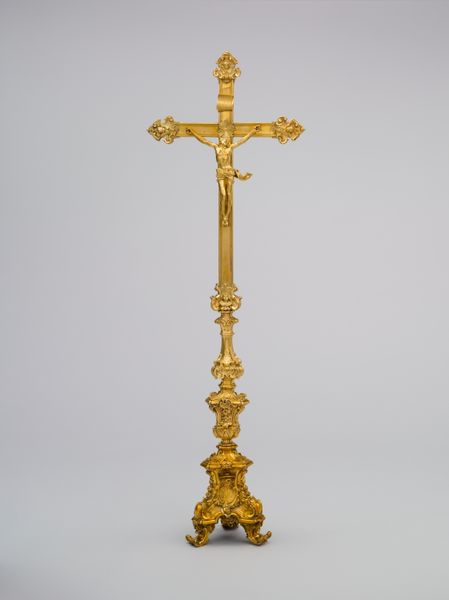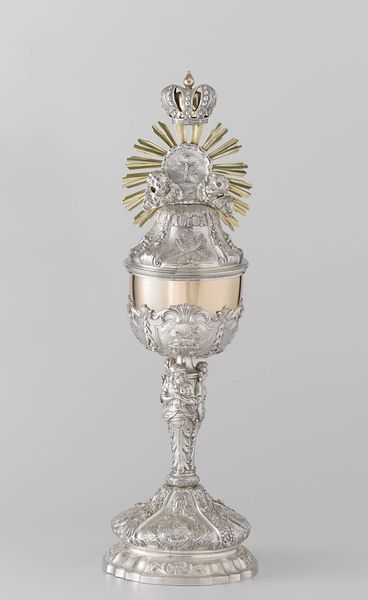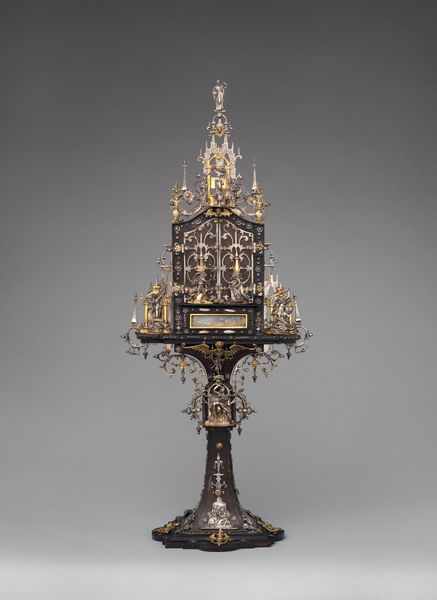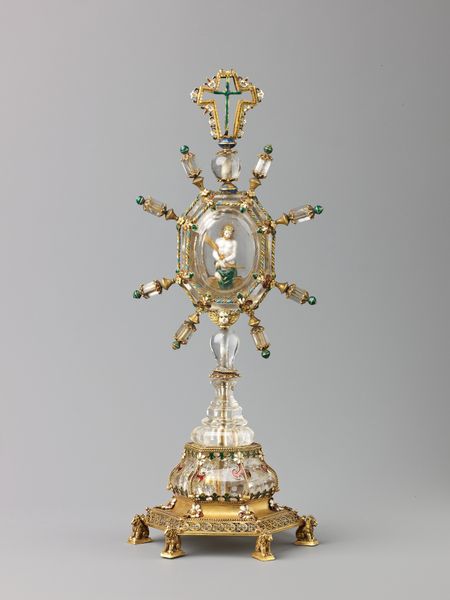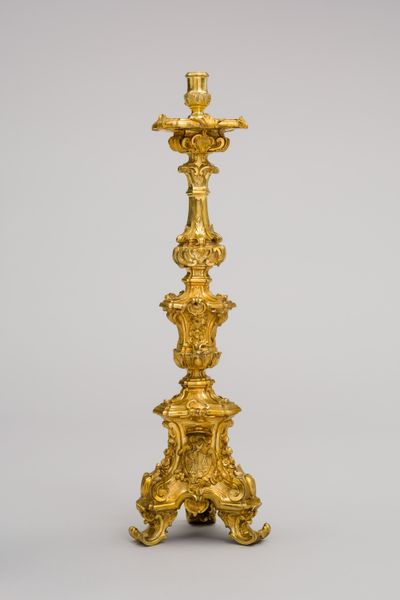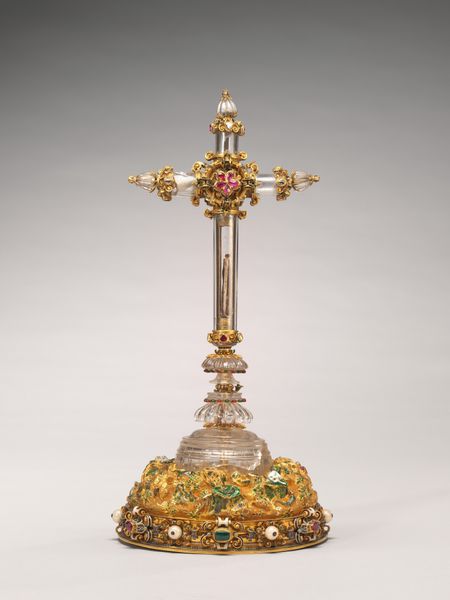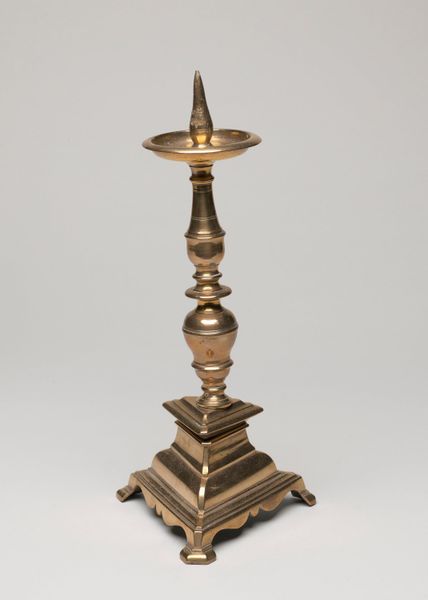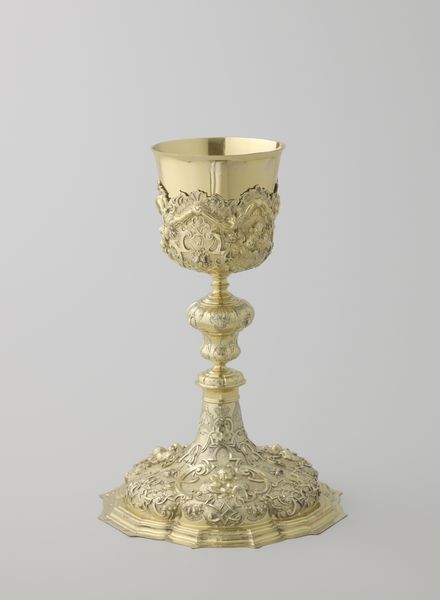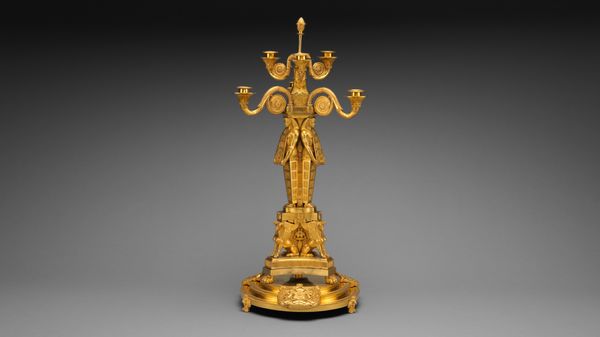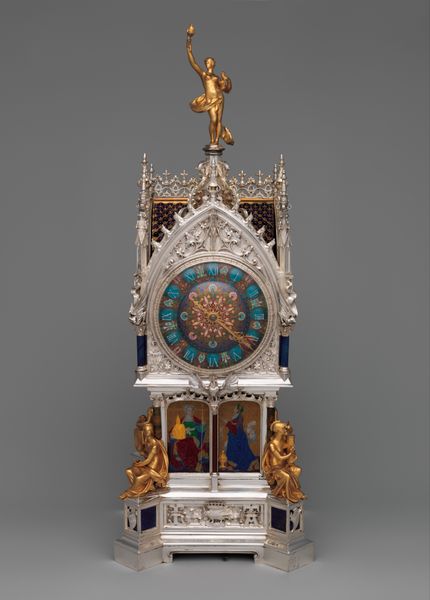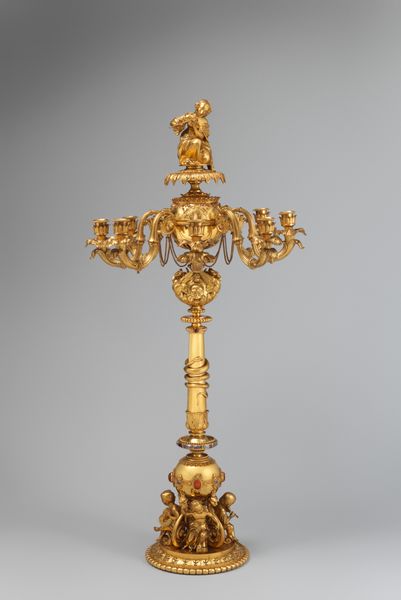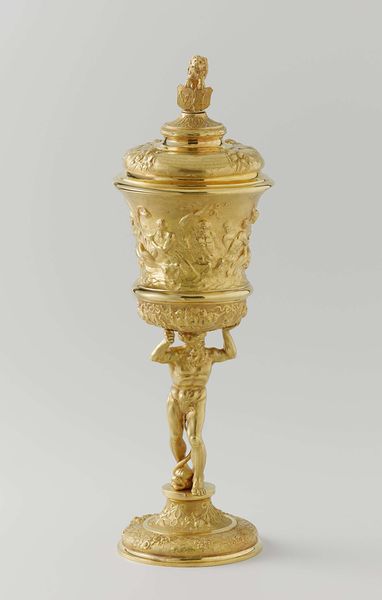
Reliquary Monstrance with a Tooth of Saint John the Baptist c. 1433
0:00
0:00
silver, gold, glass, sculpture
#
medieval
#
silver
#
germany
#
gold
#
gothic
#
form
#
glass
#
vessel
#
sculpture
#
decorative-art
Dimensions: 45.1 cm (17 3/4 in.)
Copyright: Public Domain
Curator: This exquisite object is a reliquary monstrance crafted around 1433, currently held at the Art Institute of Chicago. It was commissioned by Weddeghe Velstede. Editor: My first impression is one of ethereal elegance. The elongated form rising towards the heavens, combined with the luminosity of the materials, evokes a sense of transcendence. What are the key components? Curator: Primarily, it's fashioned from silver and gold, embellished with glass elements. This particular piece held a tooth said to belong to Saint John the Baptist, and its structure follows a Gothic aesthetic, mimicking architectural forms common in cathedrals. Editor: Considering that context, it raises some interesting questions about medieval devotional practices. How did access to such an object impact the power dynamics and social stratification of the time? And who were the artisans involved in shaping precious materials like gold and silver? Curator: It’s vital to situate objects like these within the political and religious contexts of the medieval era. Relics held immense social value; they functioned not just as spiritual artifacts, but also as instruments of political legitimation. The crafting, presentation, and display are performative acts reinforcing spiritual hierarchy. Editor: I am intrigued by the material aspect itself. Think about the miners who extracted those metals from the earth, the refining process and then the complex process of creating such a detailed, intricate object with these precious resources. There’s an inherent link here between material exploitation, religious power, and aesthetic presentation. It highlights the value and transformation of raw materials into items of luxury and worship. Curator: Precisely, and considering the time, objects like this were usually reserved for the aristocratic members of the church. However, placing emphasis on its religious meaning doesn’t erase the materiality involved; conversely, these details often bolster social power structures of the era. Editor: Seeing this piece through a materialist lens allows us to recognize the socio-economic structures and modes of production intrinsic to the creation of religious symbols. Curator: It is crucial that we use the knowledge of how things are constructed, from inception to display, in understanding social, spiritual, and political values during that time period. This intersection gives rise to valuable insight regarding our historical understanding. Editor: Absolutely. Reflecting on both the craft and context really highlights how artifacts act as powerful expressions of social values and structures.
Comments
No comments
Be the first to comment and join the conversation on the ultimate creative platform.
